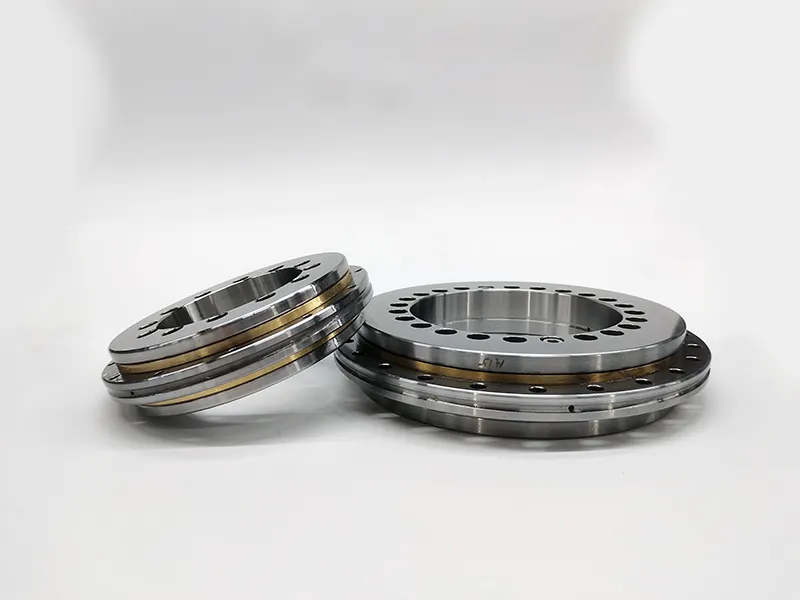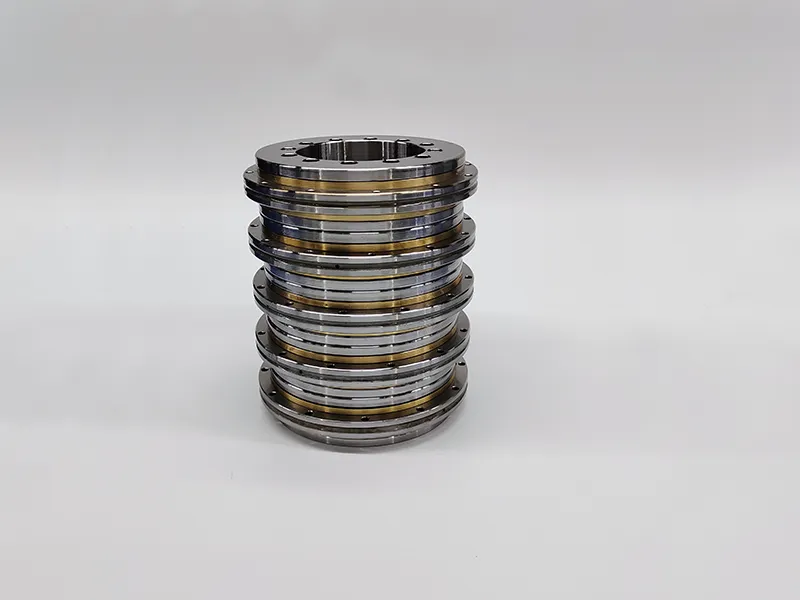А подшипник поворотного стола, often used in applications requiring precision rotation, such as machine tools and rotary tables, has a specialized structure to support and facilitate smooth rotational movement. Here is an overview of the key components and structure of a rotary table bearing.
1. Bearing Type
Rotary table bearings are typically cross-roller bearings or YRT (Yaw and Roll Table) подшипники, designed to handle axial, радиальный, и моментные нагрузки одновременно.
2. Компоненты и структура

Внутреннее и внешнее кольца:
Внутреннее кольцо: Mounted on the stationary part of the rotary table, providing the raceway for the rolling elements.
Внешнее кольцо: Attached to the rotating part of the table, also serving as a raceway for the rolling elements.
Rolling Elements:
Cross-Roller Bearings: Use cylindrical rollers arranged perpendicular to each other in a cross pattern, which allows them to handle high axial and radial loads as well as tilting moments.
YRT Bearings: Comprise an axial needle roller and cage assembly, a radial cylindrical roller, and two axial cylindrical roller and cage assemblies, ensuring high rigidity and precision.
Cage:
Holds and guides the rolling elements, ensuring they remain evenly spaced and reducing friction.
Seals:
Installed on both sides of the bearing to prevent contamination and retain lubrication, enhancing the bearing’s lifespan and performance.
Preload Adjustment:
Many rotary table bearings come with a mechanism to adjust preload, ensuring optimal stiffness and minimizing deflection during operation.

3. Design Features
High Precision: Designed to maintain accurate positioning with minimal deflection, crucial for precision applications like CNC machines and indexing tables.
Высокая грузоподъемность: Capable of supporting heavy axial, радиальный, and moment loads due to the robust design and high number of rolling elements.
…
For more detailed information about the rotary table bearing structure, пожалуйста, нажмите здесь: https://www.boyingbearing.com/en/a/news/rotary-table-bearing-structure.html


